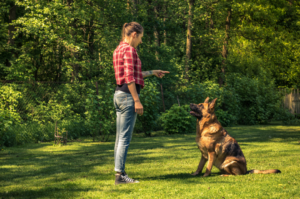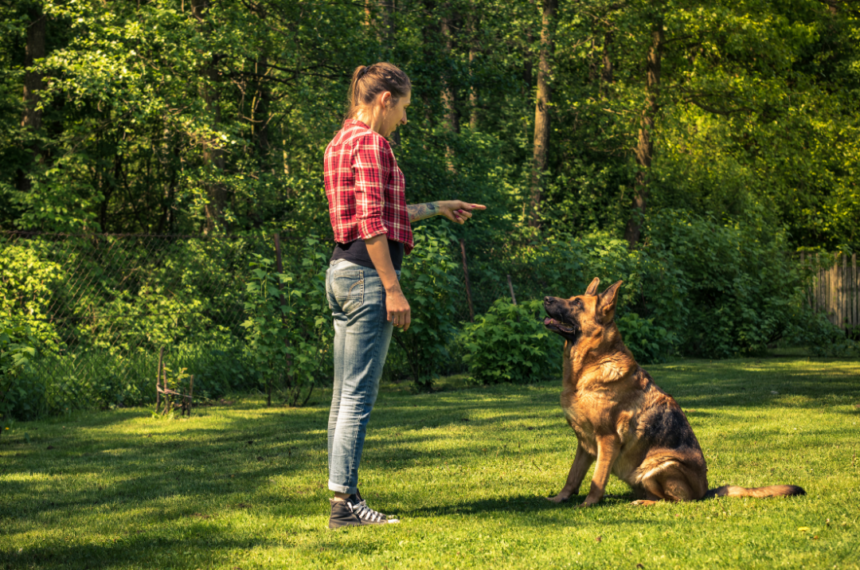 Welcome to an exploration into the intricate world of canine behavior, where understanding your dog’s communication, thoughts, and actions is key to nurturing a strong and harmonious relationship. This blog post delves into the essence of canine communication, socialization, and psychology, offering valuable insights to help you become the best dog parent you can be.
Welcome to an exploration into the intricate world of canine behavior, where understanding your dog’s communication, thoughts, and actions is key to nurturing a strong and harmonious relationship. This blog post delves into the essence of canine communication, socialization, and psychology, offering valuable insights to help you become the best dog parent you can be.
The Evolution of Canine Social and Cognitive Behavior
Dogs are often referred to as “man’s best friend,” but ironically, studies show that around 70% of dogs tend to form stronger attachments to women than men. Over time, dogs have evolved to become uniquely attuned to human emotions and behaviors, making them exceptional companions.
Research shows that the social and cognitive behaviors we see in dogs today developed as a result of how they were bred over time during domestication from their wild ancestor – the wolf. Over thousands of years, as dogs became more integrated into human society, they developed an exceptional ability to understand and respond to human cues, surpassing even our closest relatives, the chimpanzees.
This remarkable flexibility in social communication is seen in how dogs use visual, auditory cues, and their sense of smell to interact with us. However, it’s important to note that the ability to exhibit communicative or suggestive behaviors can vary across different breeds. For instance, Pugs or Bulldogs (brachycephalic breeds), may have limitations in visual communication due to their flat faces, while Greyhounds (dolichocephalic breeds) may have a wider range of visual expressiveness.
Understanding Canine Communication: More Than Just Barks and Wags
Dogs communicate with us in ways that go far beyond the obvious barks and wagging tails. Their language is subtle, filled with nuanced body cues and vocalizations that, when properly understood, can reveal a wealth of information about their emotions and intentions.
For instance, while a broad, sweeping tail wag generally indicates happiness and approachability, a stiff, upright tail might signal alertness or even aggression. A tail tucked between the legs is often a sign of fear or submission, whereas avoiding eye contact might suggest discomfort or a lack of respect.
In addition to body language, dogs also use vocalizations to communicate. A high-pitched bark may express excitement or playfulness, while a deep growl often warns of discomfort or aggression. Understanding these cues is crucial for building a trusting and affectionate relationship with your dog.
The Unique Bond Between Humans and Dogs: An Attachment Like No Other
The relationship between humans and dogs is a deeply rooted attachment bond that fosters affection, trust, and emotional security. Much like human attachment styles, dogs can develop either secure or anxious attachment behaviors toward their owners. A securely attached dog feels confident and calm in the presence of their owner and can handle brief separations without distress. In contrast, a dog with an anxious attachment may become overly dependent, showing signs of anxiety or distress when left alone.
Dogs are incredibly perceptive when it comes to human emotions. Studies indicate that dogs can read and respond to human emotions through facial expressions and body language. They often mirror the feelings of their owners, showing excitement when we are happy or concern when we are upset.
Recognizing how your dog communicates with you is important. Understanding your dog’s attachment style enables you to provide the emotional support, structure, and reassurance they need to feel safe and loved, helping to prevent potential behavioral issues.
Overcoming Behavioral Challenges with Patience and Consistency
Despite your best efforts, behavioral challenges may arise from time to time. Issues like leash reactivity, separation anxiety, or excessive barking can be frustrating for both you and your dog. However, with patience, consistency, and a proactive approach, these challenges can be managed effectively.
It’s important to recognize that a dog’s behavior is often a direct reflection of their environment and the actions of their guardian. For example, dog parents can help prevent separation anxiety by maintaining a calm and consistent routine when leaving or returning home. This approach helps the dog feel secure and understand that these seemingly stressful events are just a normal part of the day.
To foster positive behavior in your dog, it’s helpful to understand how your dog perceives your actions and the signals you send. By maintaining a calm and consistent routine, you can create a secure environment that encourages good behavior and reduces potential issues.
Positive reinforcement training, which involves rewarding good behavior with treats, praise, and affection, is one of the most effective ways to address behavioral issues. By identifying the root causes of problem behaviors and implementing targeted strategies, you can help your dog overcome these challenges and thrive in their environment.
Providing Appropriate Chew Items and Mental Stimulation
Dogs have natural chewing instincts and a need for mental stimulation to stay happy and healthy. Providing a variety of chew toys can satisfy these instincts and prevent your dog from turning to household items. Look for durable chew toys made of safe materials, safe for their teeth, and regularly rotate them to keep your dog engaged.
Mental stimulation is just as important as physical exercise for dogs. Interactive toys, puzzle games, and obedience training can help keep your dog’s mind sharp and prevent boredom, promoting a happy and well-behaved pet.
Conclusion: Fostering a Happy, Healthy, and Well-Adjusted Dog
As dog parents, our mission is to create an environment where our canine companions can thrive. By understanding their communication, motivations, and instincts, and by providing them with the socialization, training, and mental stimulation they need, we can build strong, trusting relationships with our dogs. Together, let’s create a world where dogs and their parents live in harmony, enjoying a lifetime of love, companionship, and mutual respect.
